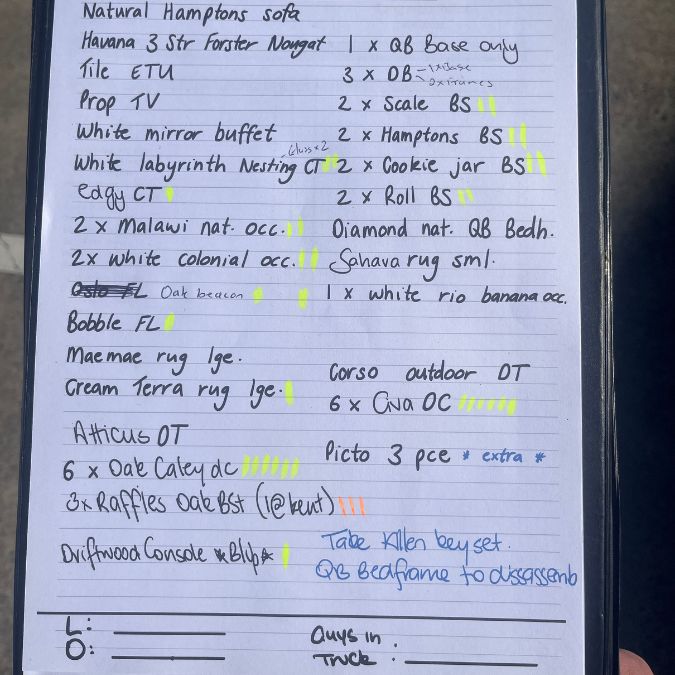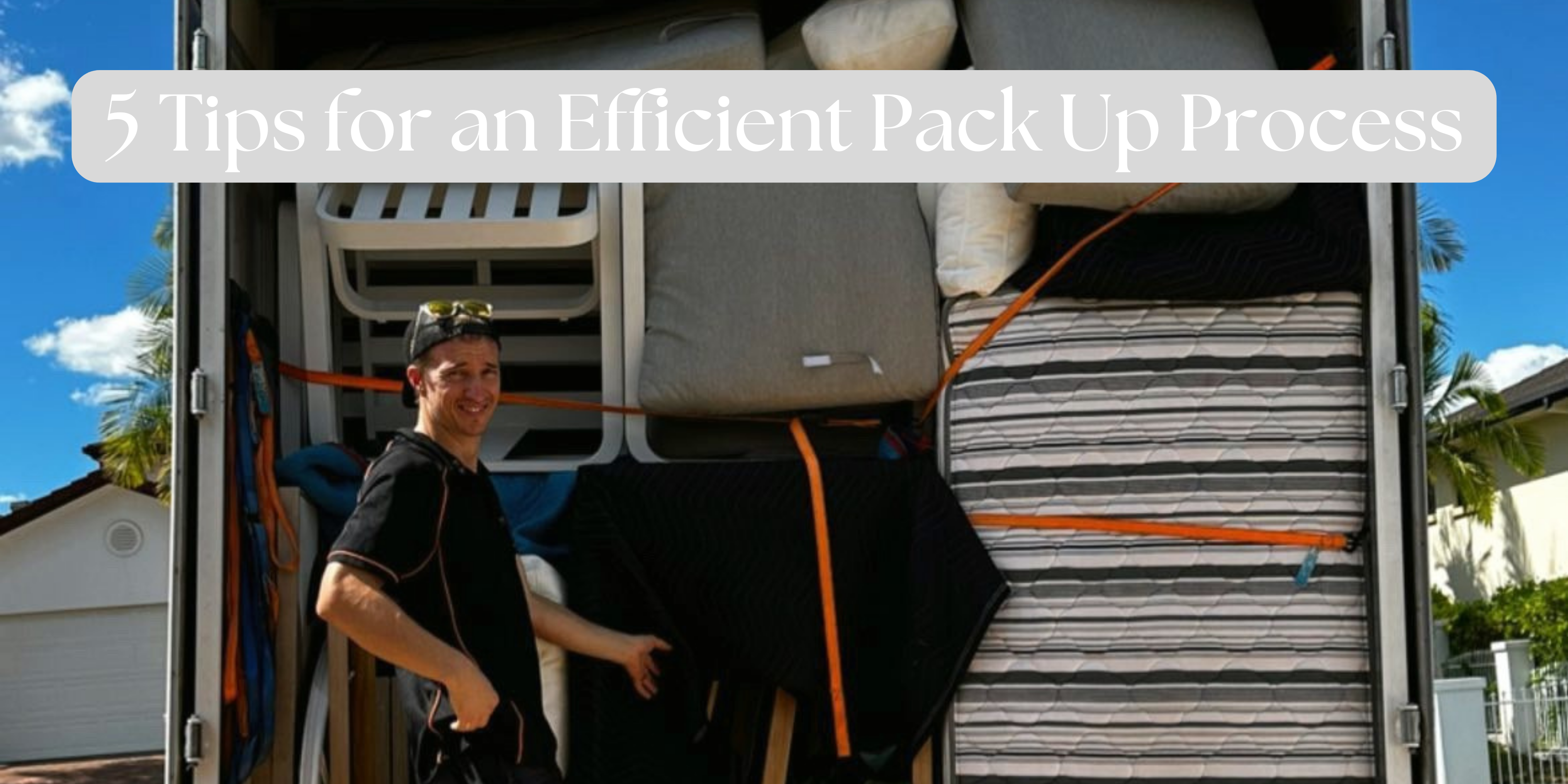5 Tips for an Efficient Pack Up Process
This article is for the home staging business owners out there.
As home stagers, an efficient pack up (de-stage, bump-out, depending on your terminology) of a property is essential to minimise downtime and maximise team productivity. The end goal being to fit more jobs in a day! In this article, I’ll explore ways we streamline the pack ups to ensure an efficient pack up process. Our pack ups revolve around how the truck gets loaded, so we’ve adopted strategies and have specific training with every team member to make sure we all know the correct process. This way we can have the property as prepared as possible when the truck arrives.
We all know the saying, work smarter not harder! So let’s dive in.
1. Know Your Priorities

Having the stylists arrive at least 15 (ideally 30) minutes before the removalists is the first way we manage an efficient property pack up. Firstly, they open all the doors to allow our removalists to get started as soon as they arrive. And using our pack up model, the stylists know what furniture will be needed as soon as the truck arrives. So, they use their judgement (influenced by the training) during these 15 to 30 minutes to tackle the task of stripping the beds, because mattresses are the first item loaded on the truck. Then they focus on moving accessories from furniture (glass top furniture is prioritised). And finally making sure the bedside tables are free of lamps, and moving fluff pieces off sofas.
This process ensures efficiency while loading the truck by ensuring the items needed by the removalists first are ready to take. Which helps to minimise downtime for the team, leading to an efficient pack up. The stylists put accessories and lamps on the kitchen bench to keep these items safe and to free up space. This helps the removalists get the bigger furniture out safely. Our pack up training enables us to assess and prioritise essential items to have prepared first. By effectively completing these tasks, the property is efficiently prepared before the truck even arrives.
2. Pack for Success
We use a specific formula when packing up bedding, which might take a little extra time at the property, but ensures efficiency when unloading the truck. And guarantees a seamless selection process when the stylists are preparing for the next install. The removalists use the bags of linen as extra padding in the truck. So, ideally we have most of the bags ready when they arrive. We separate the euro pillows and store them in their own bag to keep them organised. And standard pillows are paired with the doona in one bag, which ensures the bedding sets remain together. Both of these bags don’t get unpacked back at the warehouse. This makes the selection process for the next install streamlined for the stylists, as they can find a full set of bedding or euro pillows very easily. As for decorative cushions, throws, sheets, and valances, we pack them together in another bag (or bags) to be unpacked and sorted back at the warehouse. Our method of grouping these items allows for easy identification and preparation for future jobs.
Interested in how we organise and manage our stock back at the warehouse?
Have a read of the Ultimate Home Staging Warehouse Guide!
3. Study your Stock List
To ensure accuracy and accountability, the removalists have a furniture list that is ticked off as each item is loaded. It also enables the logistics team to prepare the order that the truck will be packed during the travel to the property. Which allows for an efficient pack up. Planning prior to the pack up helps the team load the truck in a particular order, especially if some of the furniture is going to another install (we call it a split load). A split load reduces double handling of the furniture and increases efficiency at the next job.
The list also serves as a detailed inventory, allowing the team to plan the loading process and ensure that no furniture is left behind. By systematically ticking off items, the removalist team confirms that each piece has been accounted for and loaded. This method promotes efficiency and minimises the risk of oversight. Additionally providing peace of mind to clients on jobs that employ integrated styling, by ensuring we are only loading items that belong to us. If you’re interested in learning more about our stock lists and how we identify furniture, watch the Foxy TV Episode below!

4. Artwork, Bed Frames and Accessory Buckets Loaded Last
While the final items of furniture are being loaded, our stylists focus on the last pieces in the house. These are bed frames, artwork and packing accessories (which were previously removed off furniture) into these buckets. We collect bed frames and artwork while the final pieces of furniture are being loaded. And we carefully stack them near the entry point, close to where the truck is. This deliberate placement allows for easy access once the removalists are ready for them. And by loading the art last, we prioritise its security and ensure (as best we can!) that no damage happens in the process.
5. Double Check!
Once a room has been emptied of everything we make a habit of double checking that nothing has been forgotten. When we’re certain everything has been properly cleared, we close the door to signify that the room is finished. This simple yet effective step serves as a visual indicator for the team, clearly communicating that the room has been emptied. This saves any double handling amongst the team. Closing the door provides clarity and helps maintain an organised workflow, ensuring that no areas are overlooked or missed.
By using this pack up process we ensure that they happen efficiently and safely. This saves us time and energy to enable us to maximise our output in a day.







Facebook Comments